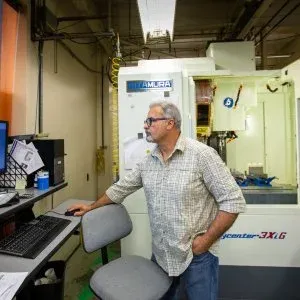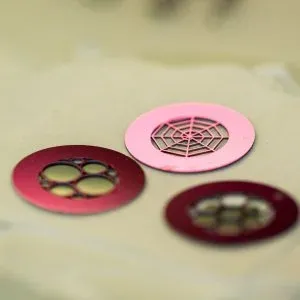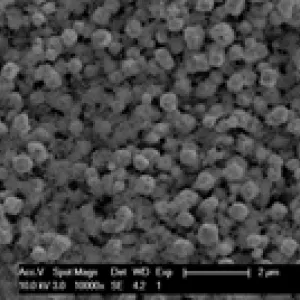RF Vacuum Electronics

For decades, TID staff have been at the forefront of R&D in RF vacuum electronic devices. From UHF to millimeter-waves, vacuum electronics are critical for efficient RF amplification - particularly at the high power levels required by accelerators. Current areas of research include: novel cathode technologies, high-efficiency amplifiers for both large-scale and compact accelerator systems, high power mm-wave sources, additive manufacturing for VEDs, and unique RF source topologies for maximizing DC-to-RF efficiency.
Key Competencies

Advanced Fabrication/Prototyping & RF Fabrication
TID staff operate and maintain a prototype fabrication facility (~22,500 ft2) that includes thin film vacuum coating systems (evaporative and sputtering); precision conventional and CNC machining and metal forming for ultra-high vacuum and high-gradient application components; metrology (optical, scanning electron microscopy, and coordinate measurement machines); metal joining equipment including vacuum brazing, dry and wet hydrogen brazing, diffusion bonding, tungsten inert gas welding and clean spot welding; heat treating (annealing, hardening, tempering, and air firing); vacuum processing including high temperature vacuum firing, bake-out, and leak detection.
Microfabrication
Ability to access numerous micro and nano fabrication clean rooms and tools for fabrication and evaluation for: ion milling, metal deposition, organic film deposition, electron beam lithography, and focused ion beam patterning, etc.; as well as characterization: SEMs, TEMs, XRD, XPS, Auger, SIMS, SPMs, etc.

mm-Wave/THz
An underutilized portion of the electromagnetic spectrum that holds great promise for unique applications in communications, remote sensing, spectroscopy and accelerator technology. We are developing both the sources and exploring applications in this frequency range using our unique electromagnetic simulation tools, fabrication and test facilities.
RF Material Science
We are developing a system to probe changes in the material surface structure during the application of a high field RF pulse by employing temporally resolved (tens of picoseconds) x-ray diffraction. X-ray diffraction provides a non-invasive, direct measurement of strain profiles when utilized in a grazing-incidence geometry. This will be the first ever RF pump x-ray probe experimental system capable of spanning frequencies from gigahertz to terahertz and operating at a few Kelvin to room temperatures. We also conduct test with normal and superconducting RF materials to improve our accelerator technology.

RF Sources (Design, Fabrication & Testing)
RF sources are a key driver the size and performance of accelerators, radars, telecommunications systems and satellite platforms. The SLAC TID team is uniquely qualified to bring the novel vacuum electronics (VEDs) concepts to experimental validation. The demonstration of VEDs requires the development and integration of a variety of technology maturity levels, combining fundamental research with the unique facilities and capabilities of a National Laboratory with a longstanding reputation for RF source development.
Thermionic Emitters
SLAC TID is the first to integrate these revolutionary cathodes into an RF source taking advantage of their high current density to eliminate beam compression requirements in the electron gun. Furthermore, SLAC TID has developed multiple cathode test vehicles for evaluating degradation behavior of these cathodes facilitating their comparison to other technologies.

